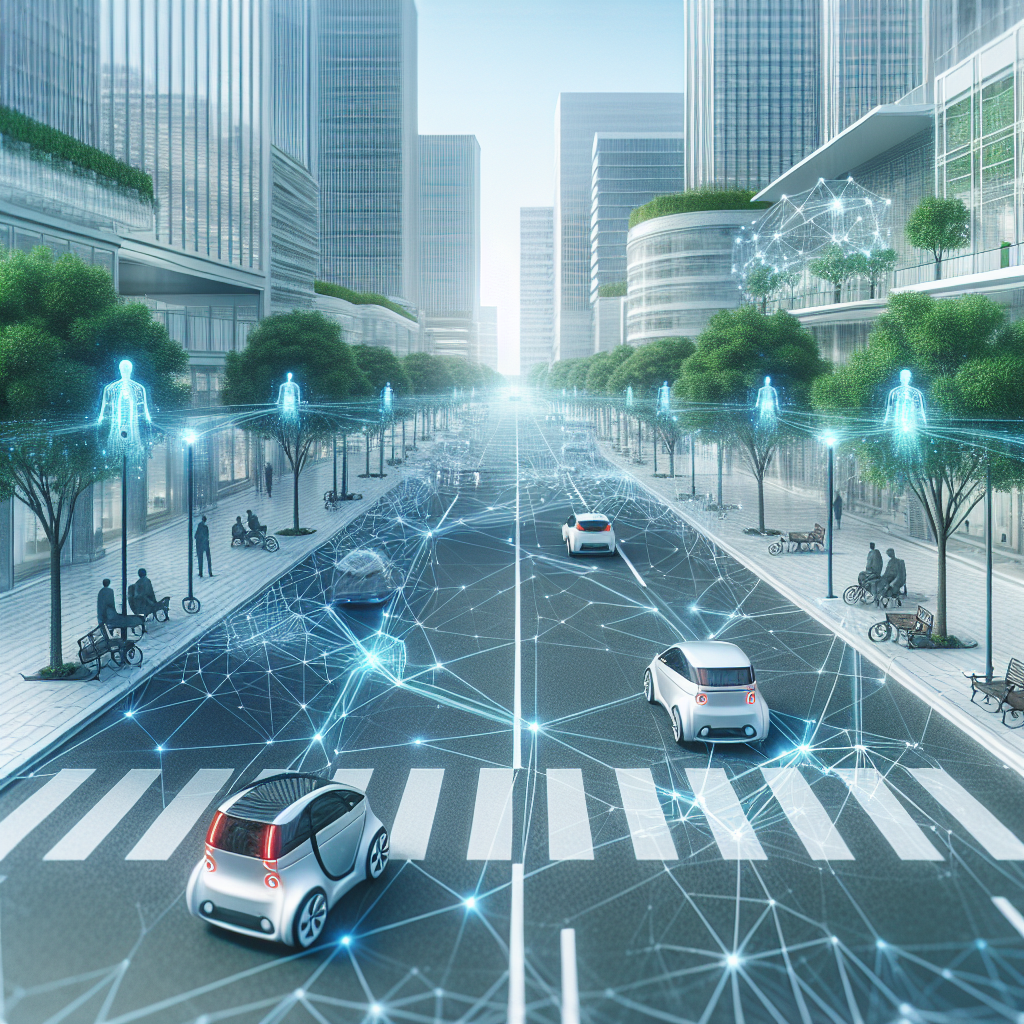Sustainable Transportation 2.0: The Impact of AI on Mobility
In recent years, there has been a growing emphasis on sustainable transportation as a way to combat climate change and reduce the environmental impact of our daily commute. From electric vehicles to bike-sharing programs, the transportation industry has been rapidly evolving to meet the demands of a more eco-conscious society. One of the key drivers of this change is the integration of artificial intelligence (AI) into transportation systems, leading to what some are calling Sustainable Transportation 2.0.
AI has the potential to revolutionize the way we move around cities, making transportation more efficient, safer, and environmentally friendly. From optimizing traffic flow to predicting demand for public transportation, AI is already having a significant impact on mobility. In this article, we will explore the various ways in which AI is transforming the transportation industry and discuss the potential benefits of Sustainable Transportation 2.0.
1. Optimizing Traffic Flow
One of the biggest challenges in urban transportation is traffic congestion. AI-powered systems can help alleviate congestion by optimizing traffic flow in real-time. By analyzing data from sensors, cameras, and GPS devices, AI algorithms can predict traffic patterns and adjust traffic signals accordingly. This can help reduce travel times, fuel consumption, and emissions, making transportation more sustainable.
For example, in Singapore, the government has implemented an AI-powered traffic management system that uses real-time data to adjust traffic signals based on current traffic conditions. This has led to a significant reduction in congestion and improved overall traffic flow in the city.
2. Predictive Maintenance
AI can also be used to improve the maintenance of transportation infrastructure, such as roads, bridges, and public transportation systems. By analyzing data from sensors and monitoring systems, AI algorithms can predict when maintenance is needed and schedule repairs before major issues arise. This can help prevent costly breakdowns and ensure that transportation systems are operating efficiently.
For example, the city of Barcelona has implemented an AI-powered predictive maintenance system for its metro system. By analyzing data from sensors installed on trains and tracks, the system can predict when components are likely to fail and schedule maintenance accordingly. This has helped reduce downtime and improve the reliability of the metro system.
3. Autonomous Vehicles
One of the most exciting applications of AI in transportation is the development of autonomous vehicles. These self-driving cars, trucks, and buses have the potential to revolutionize the way we travel, making transportation safer, more efficient, and more sustainable. By using AI algorithms to interpret data from sensors, cameras, and radar systems, autonomous vehicles can navigate roads, avoid obstacles, and make decisions in real-time.
Companies like Waymo, Tesla, and Uber are already testing autonomous vehicles on public roads, and many experts believe that self-driving cars will become mainstream in the next decade. This could have a major impact on mobility, reducing the number of cars on the road, improving traffic flow, and reducing the need for parking spaces.
4. Mobility as a Service
Another trend in sustainable transportation is the concept of Mobility as a Service (MaaS), which aims to provide seamless, integrated transportation options to users. By using AI algorithms to analyze data from various transportation providers, MaaS platforms can offer users personalized travel options based on their preferences, budget, and schedule. This can help reduce reliance on private cars and encourage the use of public transportation, cycling, and walking.
For example, in Helsinki, Finland, the government has implemented a MaaS platform called Whim, which allows users to access multiple transportation options, including public transportation, taxis, and bike-sharing, through a single app. This has helped reduce car ownership in the city and promote more sustainable modes of transport.
5. Environmental Impact
Overall, the integration of AI into transportation systems has the potential to have a significant impact on the environment. By optimizing traffic flow, improving maintenance practices, and promoting sustainable modes of transport, AI can help reduce greenhouse gas emissions, air pollution, and energy consumption. This can contribute to a more sustainable and environmentally friendly transportation system that benefits both people and the planet.
FAQs
Q: How will AI improve public transportation systems?
A: AI can help improve public transportation systems in a variety of ways, including optimizing routes, predicting demand, and reducing maintenance costs. By analyzing data from sensors and monitoring systems, AI algorithms can help public transportation providers offer more efficient and reliable services to passengers.
Q: Will autonomous vehicles replace traditional cars?
A: While autonomous vehicles have the potential to revolutionize the way we travel, it is unlikely that they will completely replace traditional cars in the near future. However, self-driving cars could become more common in urban areas and for specific use cases, such as ride-sharing and delivery services.
Q: How can individuals contribute to sustainable transportation?
A: Individuals can contribute to sustainable transportation by using public transportation, cycling, walking, carpooling, and using ride-sharing services. By choosing more sustainable modes of transport and reducing reliance on private cars, individuals can help reduce emissions, congestion, and energy consumption.
In conclusion, Sustainable Transportation 2.0 is an exciting and rapidly evolving field that promises to revolutionize the way we move around cities. By integrating AI into transportation systems, we can make transportation more efficient, safer, and environmentally friendly. From optimizing traffic flow to predicting demand for public transportation, AI has the potential to have a significant impact on mobility. As we continue to embrace new technologies and innovations, we can create a more sustainable and accessible transportation system that benefits both people and the planet.

